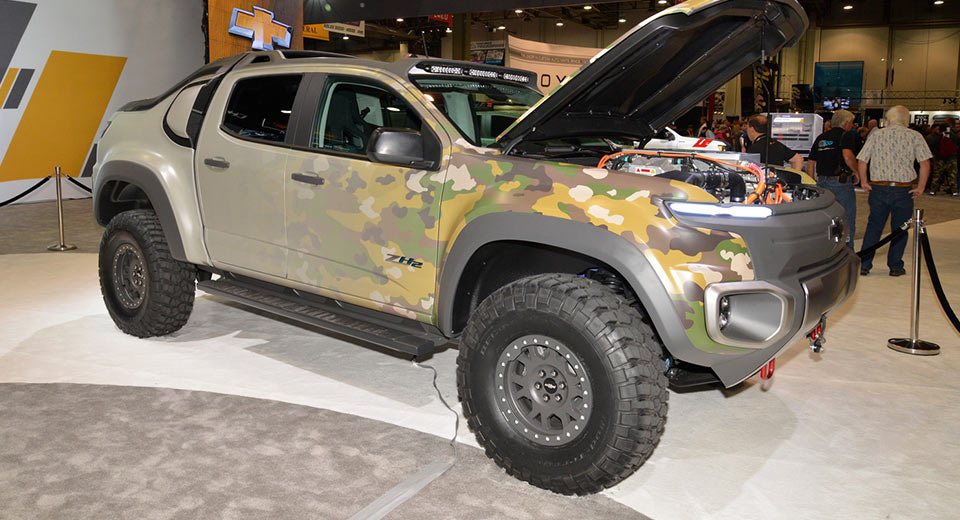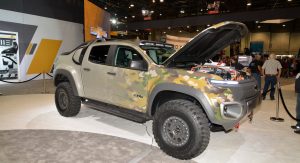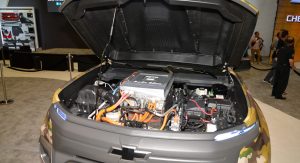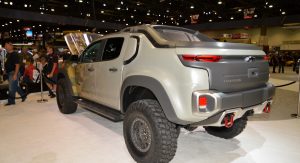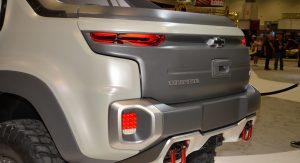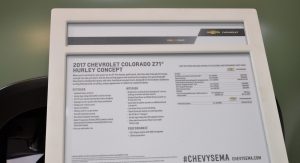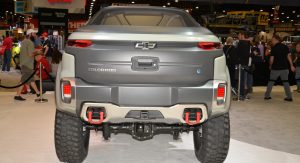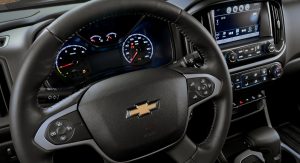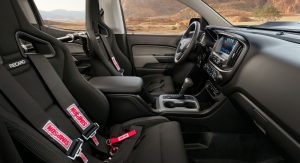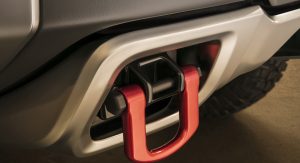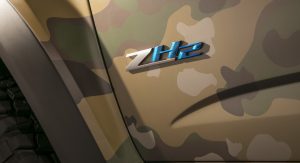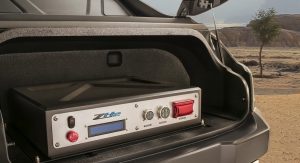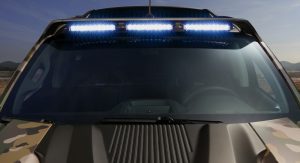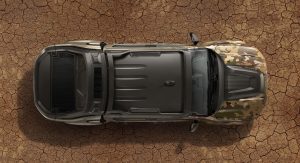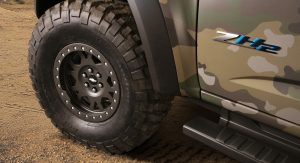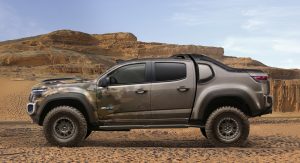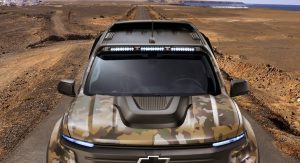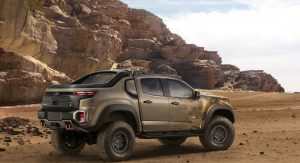Fuel cell vehicles are often boring, awkwardly shaped machines, built with maximum efficiency in mind, but not this one.
In its quest for innovation, Chevrolet took a different route while developing the Colorado ZH2, trying to prove that hydrogen-powered vehicles can withstand extreme conditions.
That’s why Colorado ZH2 will commence military field testing in 2017 in order to evaluate the effectiveness of such a vehicle in mission settings – according to Chevy. Although based on a stretched and reinforced Colorado chassis, the prototype has little in common with the road-going vehicle. The cab, doors, and roof are the same, but everything else was modified or upgraded; for instance, the cab was moved back 5 inches (125 mm) to accommodate 37-inch off-road tires, so the car’s proportions are slightly different.
The power dome on the carbon-fiber reinforced Kevlar hood shields the transversely mounted fuel cell stack, while the front end of the car is being described as a “dramatic departure” from the standard Colorado. What’s more interesting is that the cooling system was moved to the rear, in order to help regulate electric power temperatures in hot environments – especially as the truck was also conceived to generate power while stationary.
At the rear, there’s a clamshell cover with integrated air intakes. The rig also houses an Exportable Power Take-off (EPTO) electric power conditioning unit, which can be used to power a subdivision, or even a small field hospital for hours – by drawing high-voltage D/C from the fuel cell.
The Colorado’s ZH2’s chassis was engineered for off-road use, featuring 12 inches (30.5 cm) of ground clearance, and 48-degree approach angle and 39-degree departure angle. The 93 kW fuel cell system transfers power to the 132 kW electric motor, producing 236 lb-ft (318 Nm) of instant torque.



